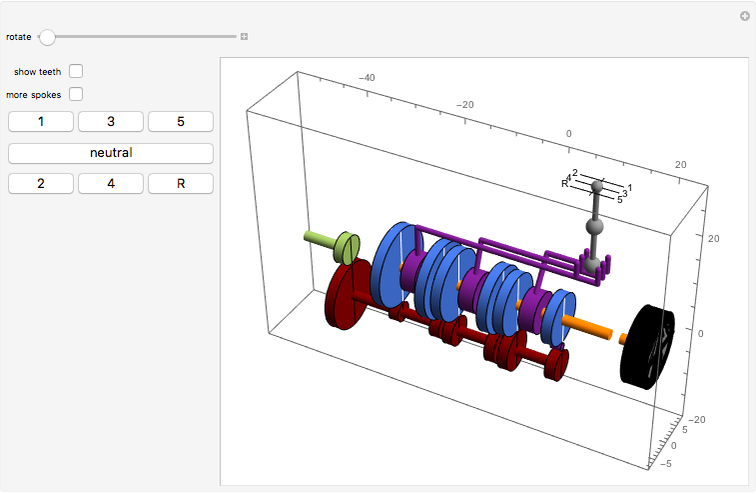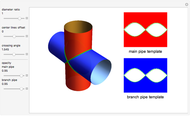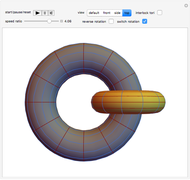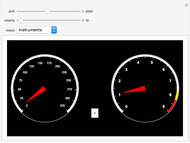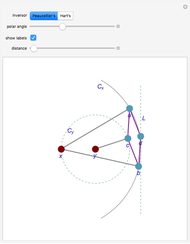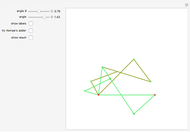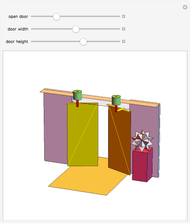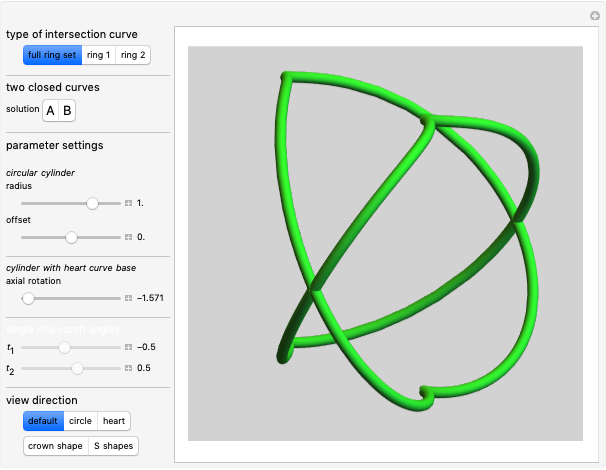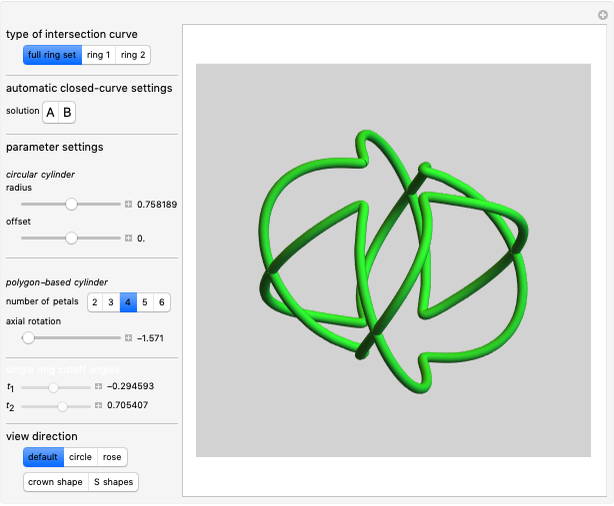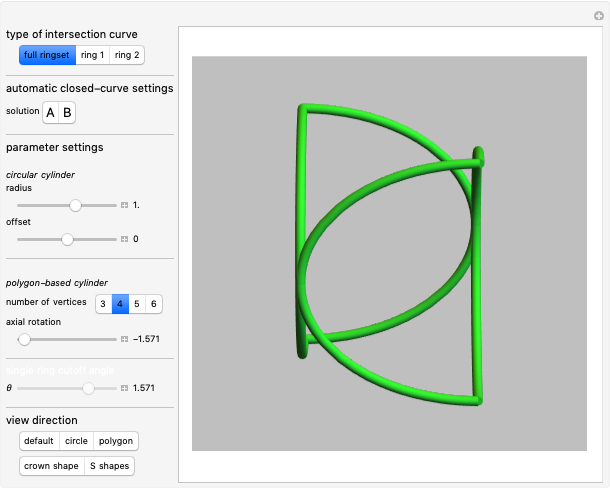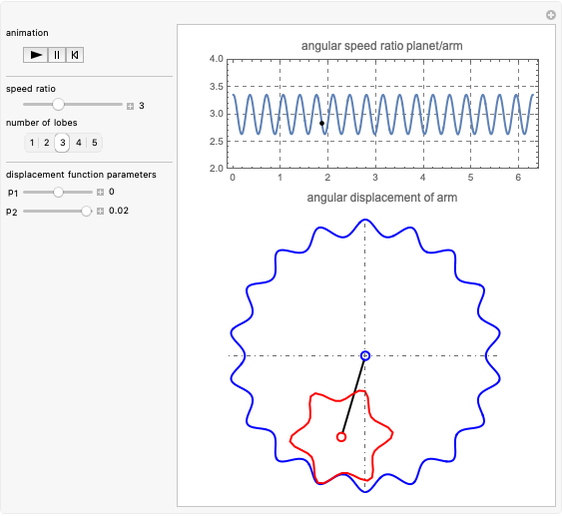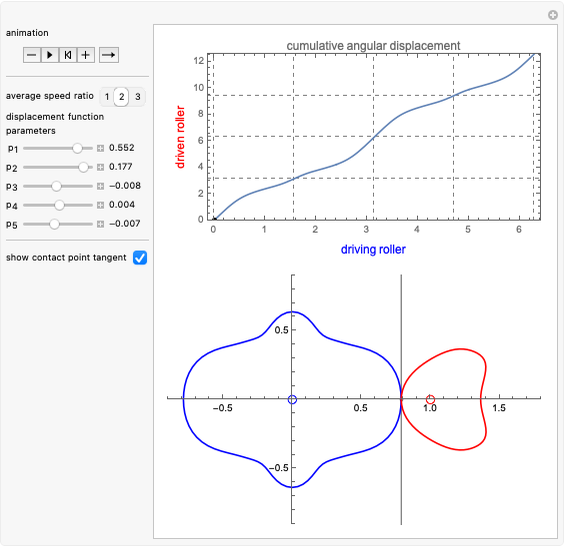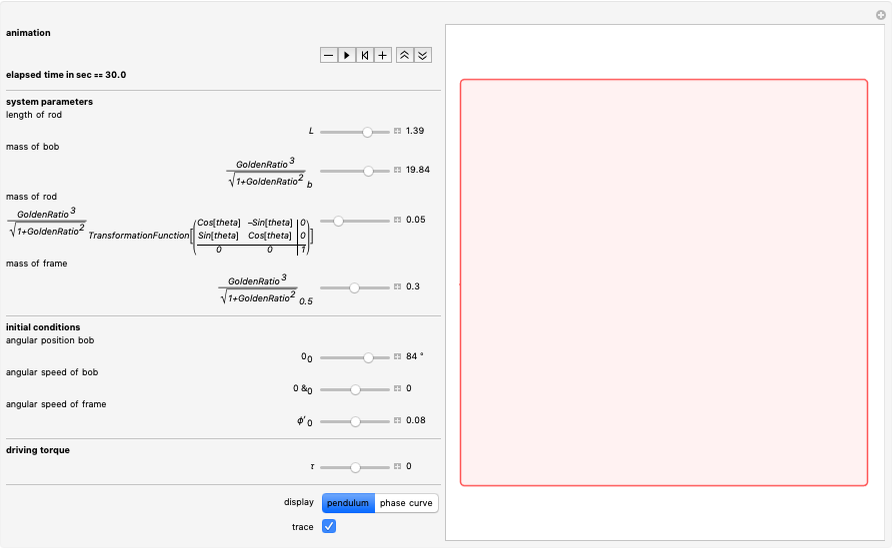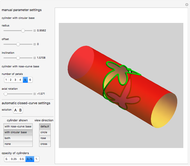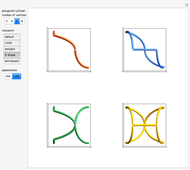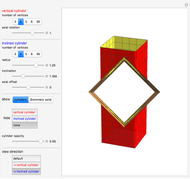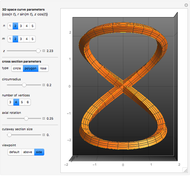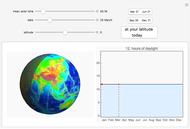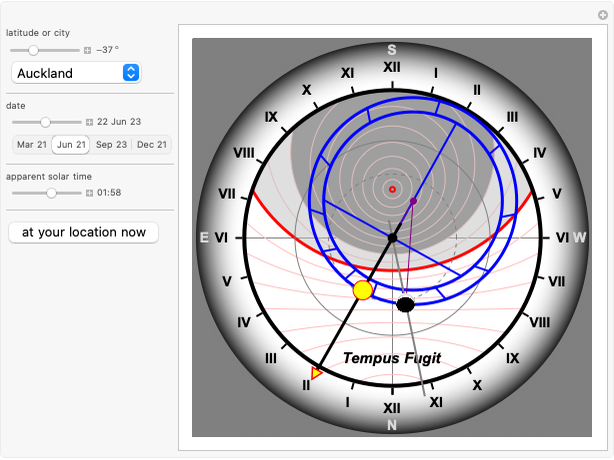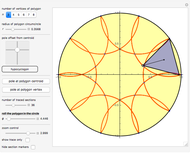Continuously Variable Transmission

Requires a Wolfram Notebook System
Interact on desktop, mobile and cloud with the free Wolfram Player or other Wolfram Language products.
This Demonstration models a toroidal continuously variable transmission (CVT). A toroidal CVT is made up of two disks on a central axle and a toroidal roller that transmits motion between them. The disks are attached to two concave conical surfaces that enclose the torus. One disk (gray) is the input and the other (yellow) is the output. When the roller's axis is perpendicular to the axis of the disks, it contacts them at same-diameter locations and thus gives a 1:1 speed ratio. You can move the roller up and down, contacting the disks at varying diameters and so changing the speed ratio through the range 1/4 to 4.
Contributed by: Erik Mahieu (July 2010)
Open content licensed under CC BY-NC-SA
Snapshots
Details
The declination  of the torus as a function of the speed ratio
of the torus as a function of the speed ratio  between the driving and driven disks is:
between the driving and driven disks is:  . The parameters (
. The parameters ( ,
,  ,
,  ,
,  ) depend on the geometry of the transmission. In order to assure continuity around
) depend on the geometry of the transmission. In order to assure continuity around  , we use the logarithmic fit:
, we use the logarithmic fit:  .
.
The speed ratio between the driving disk and the toroidal roller is:  .
.
This can also be approximated by the logarithmic fit:  .
.
This is a mechanical engineering example of a toroidal CVT.
Permanent Citation






